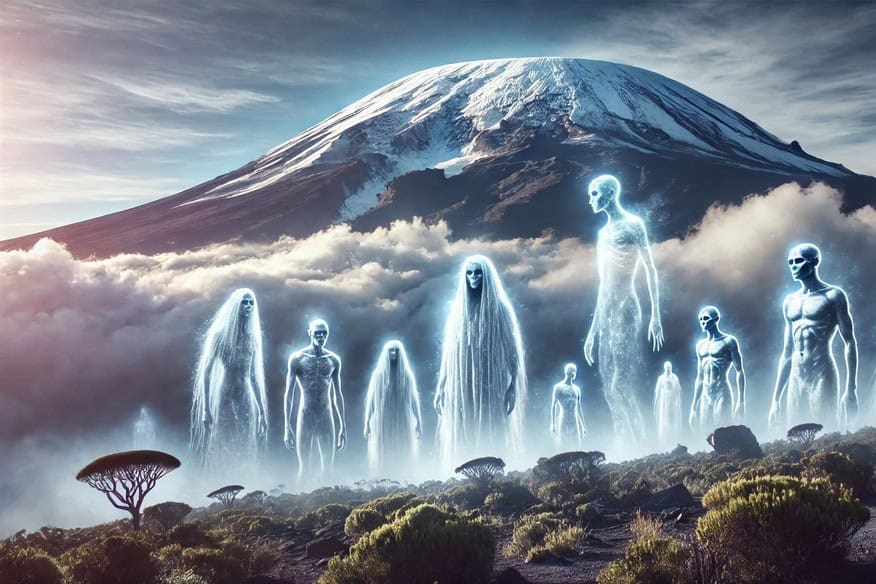What are the myths and legends surrounding Kilimanjaro? Mount Kilimanjaro, Africa's highest peak, is rich in myths and legends that reflect its cultural significance. Local tales speak of the mountain's creation by the god of the skies and the mystical warrior who sought to conquer it. These stories highlight the mountain's sacredness and its deep connection to the Chaga people.
Among the legends, one tells of a lost tribe that once thrived on Kilimanjaro's slopes, possessing profound knowledge of the mountain. Their mysterious disappearance adds an air of intrigue, reminding climbers of the mountain's unpredictable nature. Many believe that guardian spirits protect Kilimanjaro, guiding those who seek to summit its heights.
To learn more about the captivating myths of Kilimanjaro, contact Tanzania Adventures Group via WhatsApp at +255754042154. Experience the cultural richness of this iconic mountain as you embark on your own adventure!

Tanzania Adventures
Mount Kilimanjaro, Africa's highest peak, is not just a natural wonder; it is steeped in rich myths and legends that have captivated the imaginations of local communities and visitors alike. These stories, passed down through generations, reveal the cultural significance of the mountain and its profound connection to the people of Tanzania. Here, we explore some of the most notable myths and legends surrounding Kilimanjaro, brought to you by Tanzania Adventures Group.
According to local Chaga legends, Mount Kilimanjaro was created by the god of the skies, who wanted to create a paradise on earth. He fashioned the mountain from the earth and surrounded it with lush forests and fertile land. This story emphasizes the mountain's importance as a life-giving force for the people who inhabit its slopes.
One popular legend tells of a great warrior who climbed Kilimanjaro to prove his strength and courage. He ascended the mountain to capture a mystical bird said to grant immortality. Upon reaching the summit, he encountered the spirit of the mountain, who challenged him to a battle. The warrior ultimately fell to the mountain’s power, and his spirit is believed to protect climbers today.
Another legend explains the snow-capped peak of Kilimanjaro. It is said that the mountain was once a lush paradise. However, a fierce battle between the gods turned the vibrant landscape into ice and snow. The white glaciers that adorn Kilimanjaro today are thought to be the remnants of that fierce battle, a reminder of the mountain's divine power.
For many indigenous people, Kilimanjaro is considered a sacred mountain. It is believed to be the home of powerful spirits and ancestors. The Chaga people, in particular, hold rituals and ceremonies at the mountain's base to honor these spirits and seek blessings for their families and crops. Climbing Kilimanjaro is seen as a spiritual journey, connecting climbers to the land and its history.
There are tales of explorers who attempted to climb Kilimanjaro but mysteriously vanished without a trace. Local folklore suggests that the mountain itself claimed these explorers as part of its protective spirit, ensuring that only those deemed worthy could reach its summit. These stories serve as a cautionary reminder of the mountain's unpredictable nature and the importance of respecting its power.
Another legend speaks of a lost tribe that once inhabited the mountain's slopes. It is said that they possessed great knowledge of the mountain's secrets and were skilled climbers. However, they mysteriously disappeared, leaving behind only whispers of their existence. This tale adds an air of mystery to Kilimanjaro, captivating those who venture to its heights.
Many believe that guardian spirits protect the mountain and its climbers. These spirits are thought to watch over those who ascend Kilimanjaro, providing guidance and support. Climbers often leave offerings at the base of the mountain, seeking the favor of these spirits for a safe and successful journey.
In some cultures, Kilimanjaro is associated with the moon. Legends speak of the moon's power to illuminate the mountain, guiding travelers during the night. This connection symbolizes the relationship between nature and spirituality, emphasizing the mountain's significance as a beacon for those on their journey.
Kilimanjaro is also viewed as a teacher, imparting wisdom to those who climb it. Many climbers report transformative experiences during their ascent, often attributing these revelations to the mountain's teachings. The journey to the summit is seen as a path of self-discovery, where individuals confront their fears and limitations.
The glaciers atop Kilimanjaro have their own legends, believed to possess healing powers. Some locals claim that the ice can cure ailments and bring good fortune. As a result, the glaciers are respected and revered, with climbers often pausing to reflect on their significance during their ascent.
The myths and legends surrounding Kilimanjaro are celebrated through various cultural events. Festivals and rituals honor the mountain, bringing together communities to share stories and preserve their heritage. These events serve as a reminder of Kilimanjaro's importance in local culture and the bond between the people and their land.
At Tanzania Adventures Group, we invite you to explore the rich myths and legends of Kilimanjaro during your climbing experience. Our expert guides share these captivating stories, enhancing your journey to the summit. Join us to discover not only the physical beauty of Kilimanjaro but also the cultural narratives that make this mountain truly extraordinary.
